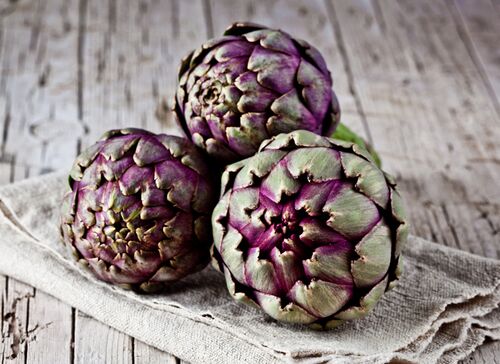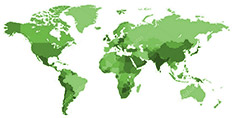Growing and sowing Artichokes

Artichoke is a plant that is often seen in southern Europe, but artichokes can also be grown in, for example the Netherlands, Belgium or UK. The only downside of growing in a relatively colder climate may be that the flower buds remain slightly smaller.
Growing your own artichoke from seeds
Artichoke is a plant that is often seen in southern Europe, but artichokes can also be grown in the more northern part of Europe. The only downside of growing in a relatively colder climate is that the flowers (the edible part) sometimes stay a little smaller. At the time of writing this website, mid/late 2022, we had a wonderful summer. as a result, more and larger artichokes have been grown. Therefore, this year's harvest was probably better and the artichokes were also bigger. The plant can usually grow to a height of one meter, but in high temperatures, 2 meters is no exception.
To say that an artichoke belongs in every allotment, no, certainly not. Since an artichoke plant grows quite large, growing artichokes is only recommended if you have enough garden space. Each plant needs about one square meter, so it's quite a waste for small gardens because you can only harvest a few flowers (which you can cook and eat). Provided, of course, that you don't opt for the beautiful purple flower. These beautiful and delicious purple flowers attract many bees, which are of course welcome guests in every garden.
Sowing and planting artichoke
Artichoke seeds are quite large, light brown in colour.
In our webshop we have one variety of artichoke seeds, the Violet de Provence artichoke. Artichoke seeds are best sown at room temperature. The first seedlings will be visible after about 2 to 3 weeks. You can start sowing in February and the plants can then be planted out in the garden from mid-May.
With a bit of luck, it can be harvested in September of the first year. In theory, the plant is hardy if the winter is not too cold. In the second year, the artichoke will produce more flowers because the plant has become stronger.
A brief summary:
- Pre-planting: February - March indoors, at room temperature.
- Sowing: From mid-May
- Directly into the garden: From mid-May (probably only in the first year or only late in the season without flowers.
Position and soil of Artichokes
The artichoke needs a lot of warmth, i.e. a sunny and sheltered location. The soil should be rich in humus and well fertilized. Because the plant can grow very large, 1 to 2 metres high and 1 metre wide, a planting distance of 1 square metre should be ensured between the individual plants.
How to care of your artichoke plants
The artichoke plants need to be watered regularly and fertilized once or twice a year, preferably during the summer months. Artichokes are perennial but must be protected from frost. It is best to cover the plant with leaves.
When and how to harvest artichoke?
If you started planting in February and planted the plants outdoors in the sun from mid-May, the first beautiful flowers will grow in September. From then on, harvesting can begin.
How to preserve artichoke
If you do it the right way, artichokes can be stored in the refrigerator for up to three days. It is important not to wash the artichoke, but only to remove the soil residues. Then store in a damp cloth in the vegetable drawer of the refrigerator. Remember that the stems must stay on. Artichoke can also be frozen after blanching.
Is artichoke healthy?
If you want to grow healthy vegetables in your garden or allotment, the artichoke is recommended. Artichoke is rich in vitamins, minerals, fiber and antioxidants.
Artichoke seeds in our collection
In our range we have the Artichoke 'Violet de Provence'.
Tips to grow artichoke
You can propagate the plant by cuttings, which can normally be done in autumn. The following year the plants will be strong enough again.
It is advisable to do this every 3 years, as the plant flowers less after the 3rd year.



